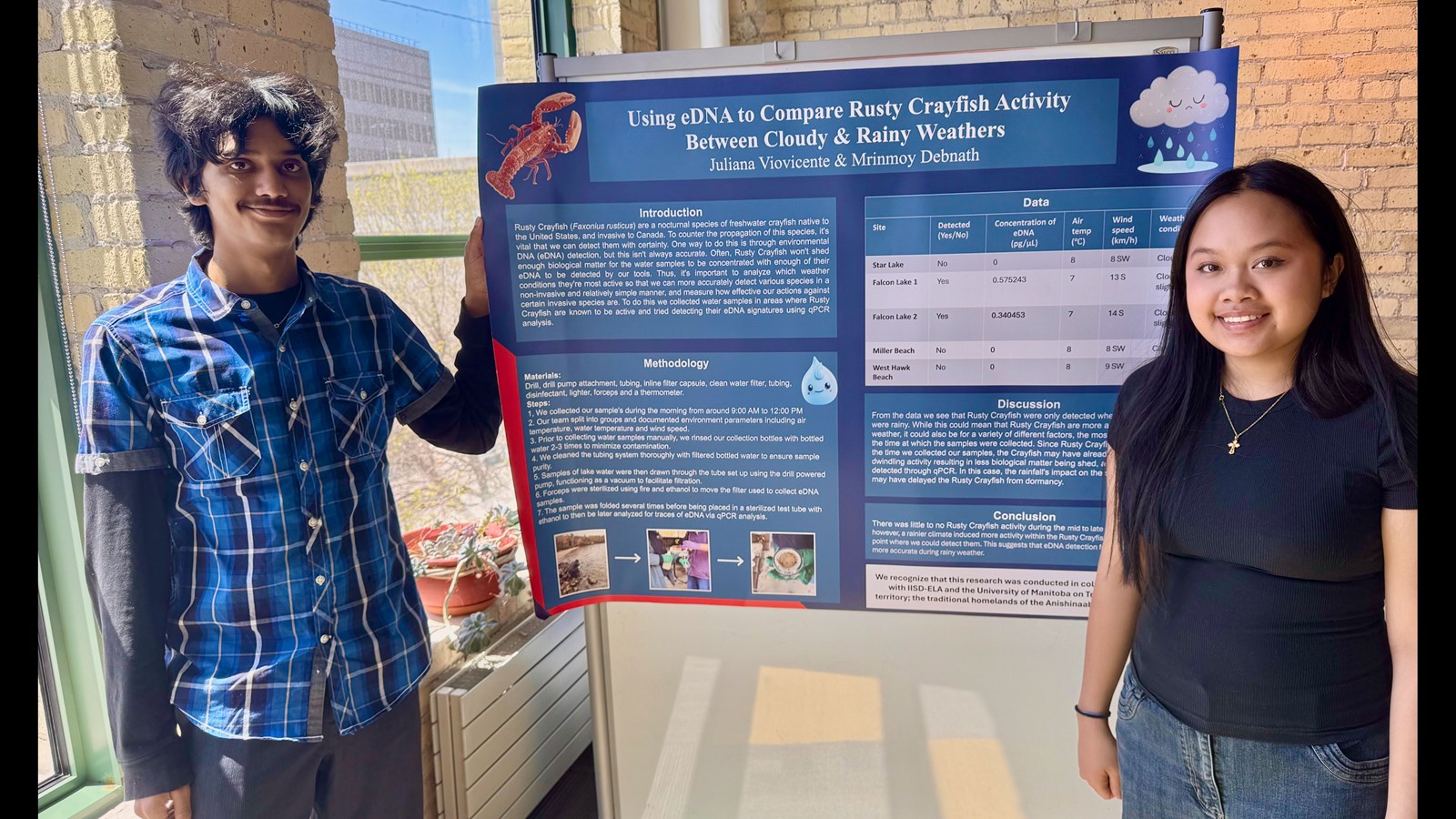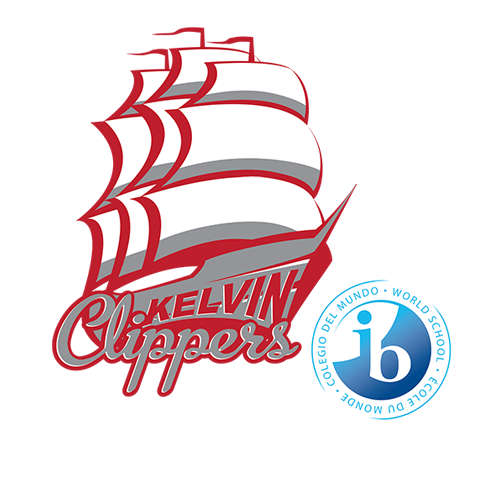eDNA Project
June 6, 2025
Kelvin students use eDNA analysis to monitor the Rusty Crayfish invasive species in the Whiteshell
Mrinmoy Debnath and Juliana Viovicente presented a poster at the IISD-ELA symposium on the Rusty Crayfish invasive species. For the past 8 months, they have been part of the Monitoring Environmental DNA & Learning Ecology with Youth (MeDLEY) program and have monitored the activity of the Rusty Crayfish in Falcon lake and surrounding Whiteshell lakes.
The IISD-ELA (International Institute for Sustainable Development – Experimental Lakes Area) adopts a whole-ecosystem approach to freshwater science and provides educational programming to youth interested in the natural sciences. During the program, these students are engaged in scientific inquiry, collaboration, and innovation. Throughout the program, Mrinmoy and Julianna did field work to sample for eDNA, learned fish identification, pipetting accuracy, and how to interpret PCR and gel electrophoresis results. They also participated in a panel discussion with professionals in the scientific community about career paths and skills required to succeed in their field and finally presented a poster to scientists and local community members
Environmental DNA, or eDNA, is DNA that has been released into the environment from an organism. It can exist either as “free-floating” DNA molecules or DNA that is still inside an animal or plant cell. eDNA is usually created when an organism dies and starts to break down or when a living organism sheds skin or secretes waste products into its surrounding environment. You can think of eDNA as forensic ecology for animals and plants. It is an innovative way of tracking where a species has been and which species can be found in a given environment or ecosystem, on land or in water. This means that eDNA is very useful for monitoring species and populations. Sampling and analyzing eDNA has the potential to be quicker and less labour intensive than catching examples of species for analysis. IISD Experimental Lakes Area is the world’s freshwater laboratory. A series of 58 lakes and their watersheds in northwestern Ontario, Canada, IISD- ELA is the only place in the world where scientists can research on and manipulate real lakes to build a more accurate and complete picture of what human activity is doing to freshwater lakes.


